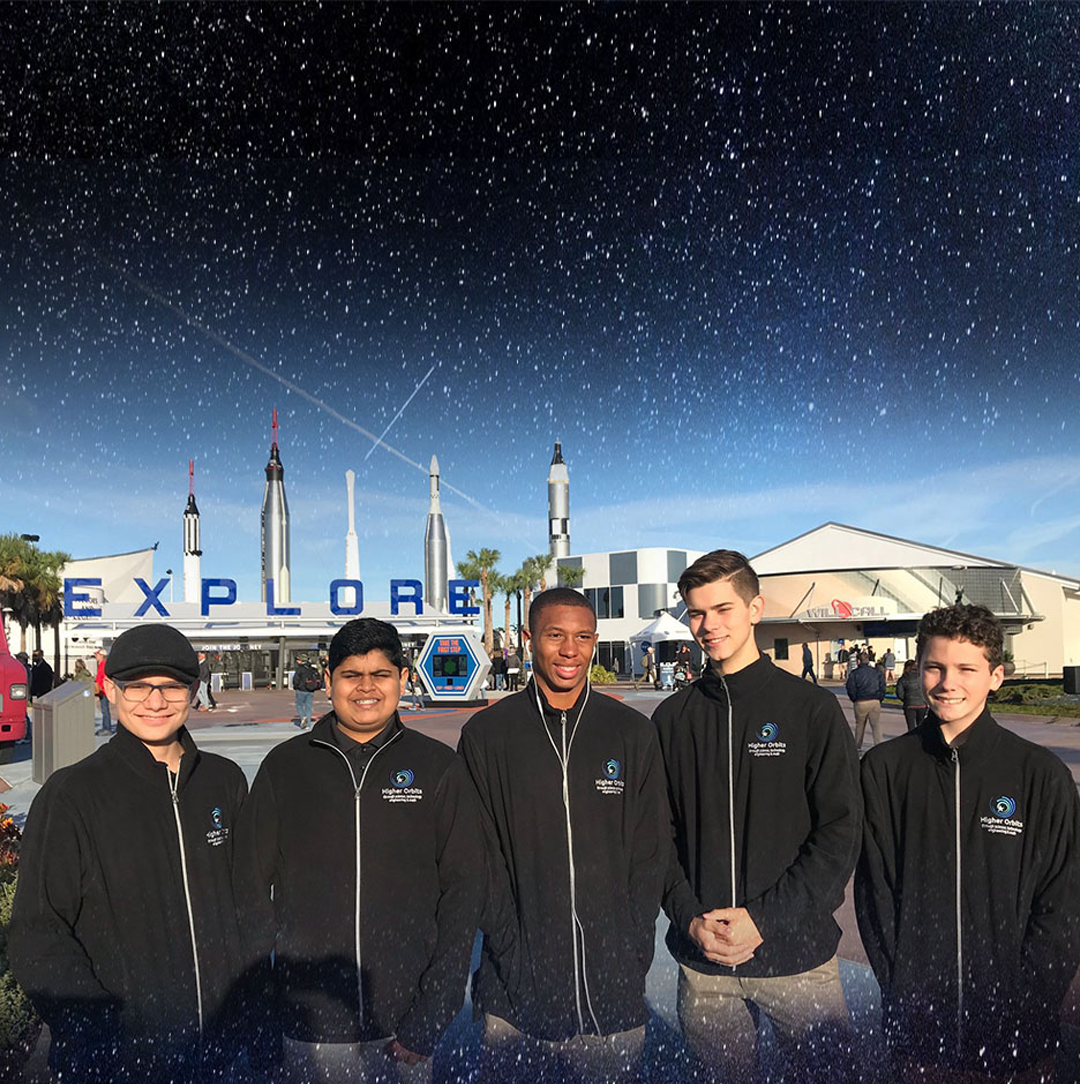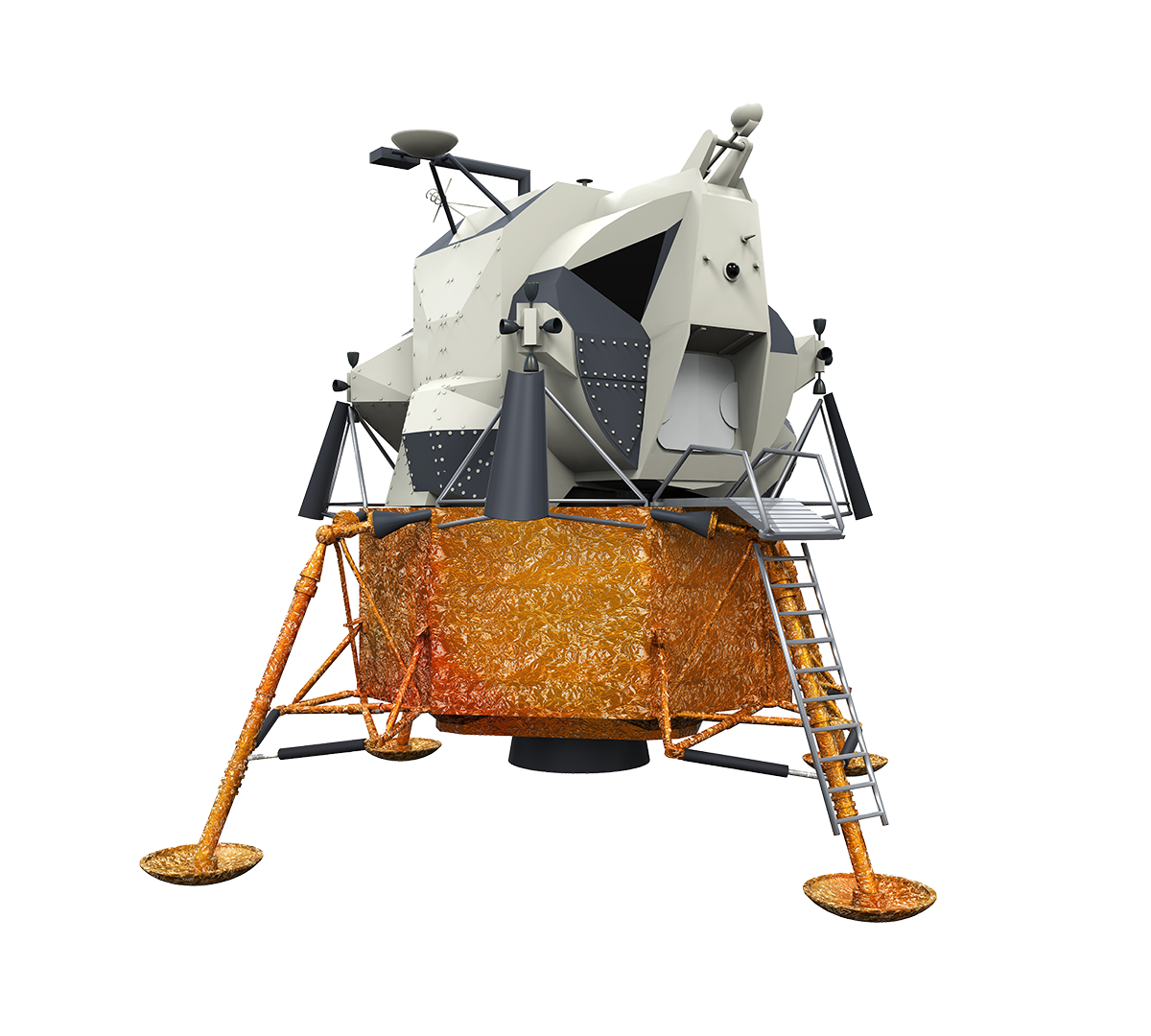On Dec. 5, 2018, Jamison Fuller watched his first rocket launch. This launch was a special one: it would be carrying his team’s experiment to the International Space Station.
“Just to see it go up into space, it was life-changing,” said Fuller.
Fuller was a member of Team Orion, the 2018 winners of the Durham Series Go For Launch! competition. This competition, presented by Higher Orbits, took place over a three-day period at the South Regional Branch of the Durham (N.C) Public Library. The teams were randomly assigned, and Team Orion, made up of Fuller, Graham Shunk, Srikar Kaligotla, Finn Poulin and Xavier Gomez, instantly clicked.
“I expected things to be awkward and to be nervous,” said Shunk, a senior at the North Carolina School of Science and Mathematics. “Luck had it, that we were all pretty extroverted, we were all fun to be around, and we were all passionate about putting together a kick-ass experiment proposal.”
The team bounced around a few ideas for their experiment, their main guideline being that it had to benefit humans.
“Our first idea was waste turned into fuel,” said Kaligotla, a junior at the Durham School of the Arts. “That would have been too harmful for the astronauts, according to our guideline, so we had to do something else.”
As the team continued to brainstorm, Fuller suggested the team look into using fungi for their experiment, and Shunk proposed looking into radiation shielding.
“Jamison (Fuller), one of our other teammates was like, ‘We should do something with fungus, that sounds really cool,’” said Gomez, who was a junior at C.E. Jordan High School during the competition. “Graham (Shunk) was bouncing ideas off; he was saying ‘what if we do something with water or radiation blocking?’”
They combined both of these ideas and decided to investigate radiotrophic fungi – a type of fungi that uses radiation to create energy – and its use as a shielding mechanism in space.
“Eventually we were like, ‘what if we just did it a fungus that blocks radiation?’” said Gomez. “And then we were like, ‘yeah, right that's a thing,’ but then we Googled it and we were like, ‘there's this fungus in Chernobyl that seems to possibly block radiation’ and then we just kind of ran with it.”
After presenting their experiment proposal to a panel of judges, Team Orion and the other teams in the Durham series attended an awards ceremony where they found out the winner of the competition.
“They said, ‘Team Orion’ and I remember we all jumped and we all just hugged each other,” said Kaligotla. “And I was like, ‘Oh, my God, we actually did it, our dreams and goals are coming true.’.”
Using their CubeLab hardware, payload hardware manufacturer SpaceTango made Team Orion’s experiment come to life. The experiment utilized a split petri dish, one side containing polyethylene and agar as a control, and the other containing agar and the fungi. Radiation sensors were placed under each side of the petri dish, and a radiation reading was taken every 30 minutes.
The experiment stayed aboard the International Space Station for 30 days, and the team received their data in early 2019. Once they received their data, they were unsure what to do next.
“Initially when we got the data back and we didn't know how to analyze it at all,” said Gomez. “It was a whole bunch of numbers.”
Progress on the project began to stall, until Shunk came across an article detailing a Stanford University team's investigation into the use of mycelium as a building material on Mars. He reached out to the principal investigator, postdoctoral student Nils Averesch, and asked if he wanted to collaborate on Team Orion’s research.
“Typically, it's the student that asks to join the research cause of a professor or researcher,” said Shunk. “I was mind boggled that a Stanford post-doc would be joining the research that Team Orion had begun with that Higher Orbits camp.
“It was really empowering to know, and for Michelle (Lucas, founder and president of Higher Orbits) to know as well, that something that started from Higher Orbits could attract researchers across the world.”
“Being able to work with this team of global researchers really stuck with me,” said Shunk. “I'm glad that I initially reached out because it took the research to another level.”
When the team released the pre-print of their manuscript, they were met with apprehension.
“After we had published a pre-print, we would get a stream of emails, about half of them were ‘OK, this is so cool can you elaborate on that’ and the other half were comments saying high-schoolers should not be putting out scientific research,” said Shunk. “That really was disheartening.”
Despite this, the team continued their work. Now, the research team made up of Gomez, Shunk and Averesch are completing the final revisions for their manuscript to submit for peer review in a scientific journal.
“I think for me; my biggest takeaway here is that if there's some research or any other thing that myself or anyone else would like to do, there's usually a way to do it,” said Gomez, who is now a sophomore at the University of North Carolina-Charlotte, studying systems and engineering. “Even if it sounds ridiculous and outlandish.”

